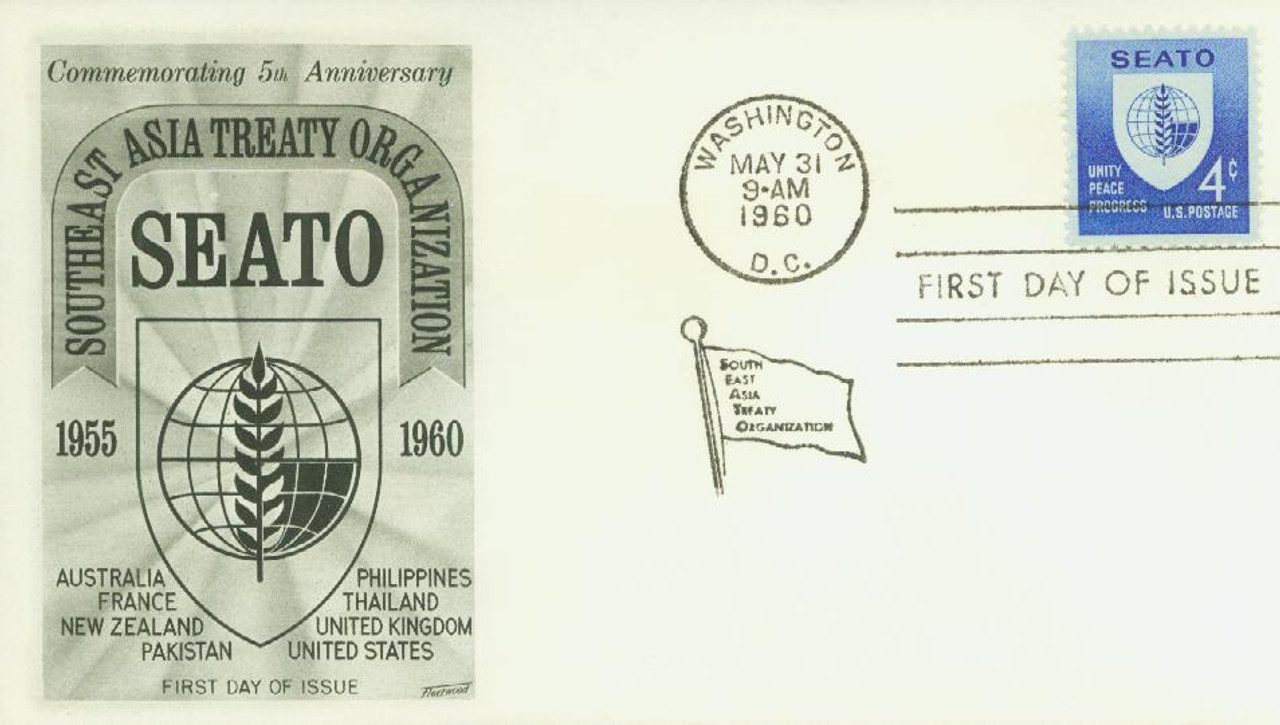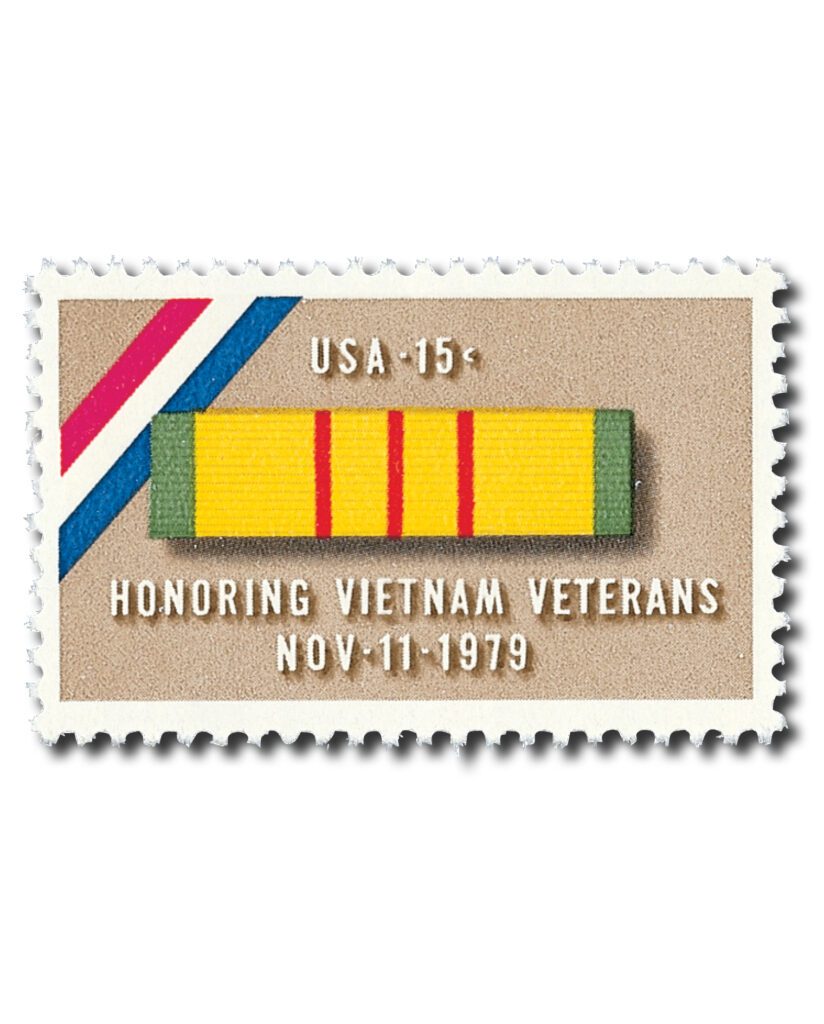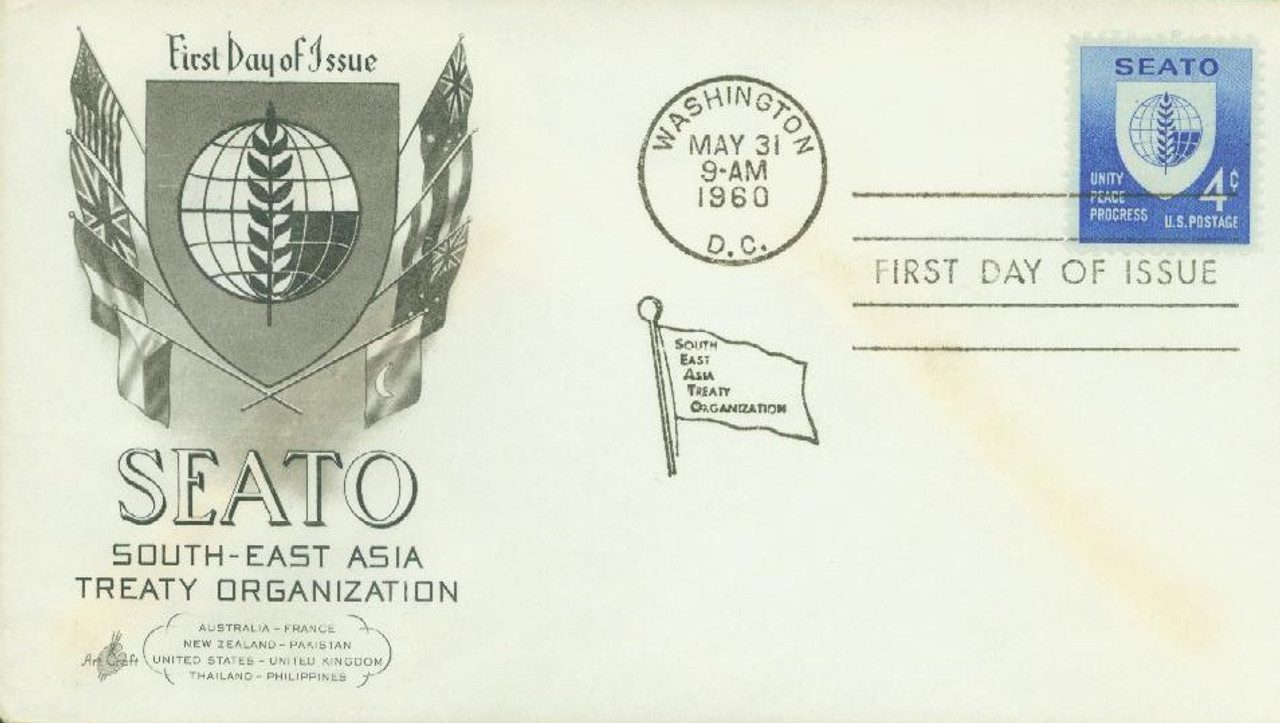On September 8, 1954, eight countries signed the Southeast Asia Collective Defense Treaty, or Manila Pact, creating the Southeast Asia Treaty Organization (SEATO).
In the years after World War II, the world entered the Cold War, a time of intense rivalry between the United States and its allies on one side, and the Soviet Union and communist movements on the other. One of the main battlegrounds of this struggle was Southeast Asia, where new countries were emerging from colonial rule and communist movements were gaining strength.
President Dwight D. Eisenhower directed his Secretary of State John Foster Dulles to establish the agreement to combat communism in Vietnam, Laos, Cambodia, and Southeast Asia in general. This was part of the Truman Doctrine established by his predecessor to counter Soviet expansion during the Cold War. Eisenhower turned to diplomat and soviet expert George D. Kennan to develop the policy and Dulles to push for its creation. Additionally, Eisenhower’s Vice President Richard Nixon encouraged the creation of an Asian equivalent of NATO after visiting Asia in late 1953. The US and representatives from seven other countries met in Manila, Philippines on September 8, 1954, to sign the treaty, officially forming SEATO. The organization’s treaty partners then met in Bangkok, Thailand on February 19, 1955, for their first formal meeting.
SEATO was modeled on the North Atlantic Treaty Organization (NATO), but its focus was the Asia-Pacific region. The United States believed that communist expansion in Southeast Asia threatened peace and stability, especially after communist forces took power in China in 1949 and after the Korean War in the early 1950s. The treaty’s main purpose was to create a collective defense system, so that if one member was attacked, the others would come to its aid. This was part of the American strategy of “containment,” which aimed to stop the spread of communism anywhere in the world.
The eight founding members of SEATO were the United States, the United Kingdom, France, Australia, New Zealand, Pakistan, Thailand, and the Philippines. Notably, many Southeast Asian countries such as Indonesia, Burma (now Myanmar), and Malaya (later Malaysia) chose not to join. Some of these countries feared that aligning with a Western military alliance would make them targets of communist groups or would interfere with their independence. As a result, SEATO included only two actual Southeast Asian countries—Thailand and the Philippines—while the rest were outside the immediate region. This limited its legitimacy in the eyes of many.
Despite these challenges, SEATO did take on several activities during its existence. One of its roles was to coordinate joint military exercises among its members. This helped strengthen the ability of countries like the United States, Australia, and Thailand to work together in case of conflict. SEATO also supported the training of military officers, providing scholarships and opportunities for members to study in allied countries. Beyond defense, SEATO created cultural and educational exchanges, promoted scientific cooperation, and helped with public health programs in Southeast Asia. These efforts aimed to strengthen ties among member countries and improve living conditions in the region.
However, SEATO never became as strong or united as NATO. One reason was that the treaty did not require automatic military action if a member was attacked. Instead, it only required members to “consult” and to take action “in accordance with their constitutional processes.” This meant that each country could decide for itself how to respond, making the alliance weaker. Another problem was that several members, such as France and Pakistan, had interests that were not always focused on Southeast Asia.
SEATO’s most visible involvement in regional conflict came during the Vietnam War. The United States argued that defending South Vietnam against communist North Vietnam was consistent with SEATO’s goals, even though Vietnam was not a member of the organization. SEATO provided a kind of political cover for US involvement, but in practice, most SEATO allies were reluctant to commit large forces. Australia, New Zealand, and Thailand offered some support, but others, such as France and the United Kingdom, remained distant. The Vietnam War exposed SEATO’s weaknesses and showed that the alliance lacked unity when it mattered most.

By the 1970s, SEATO was struggling to remain relevant. The United States was reducing its direct role in Southeast Asia after withdrawing from Vietnam. At the same time, many countries in the region were forming their own organization—the Association of Southeast Asian Nations (ASEAN)—which focused on regional cooperation without being tied to Cold War rivalries. Pakistan withdrew from SEATO in 1972 after the loss of East Pakistan, which became Bangladesh. France stopped participating in SEATO’s military activities. With fewer members committed and no major accomplishments to point to, SEATO was officially disbanded on June 30, 1977.
Although SEATO is often remembered as a failed alliance, it did have some positive impacts. For one, it provided a forum for dialogue among countries in the region and with Western powers. Its support for education, health programs, and technical assistance left behind some benefits for local communities. The military training and exercises helped countries like Thailand modernize their armed forces. Moreover, SEATO’s existence showed the determination of the United States and its allies to resist communist expansion in Asia, which may have discouraged aggression in some cases.
In the bigger picture, SEATO also helped prepare the ground for later regional organizations. The difficulties SEATO faced in trying to impose a Western-led security system on Southeast Asia highlighted the need for an Asian-led approach. This lesson influenced the rise of ASEAN, which continues to play an important role in regional cooperation today. In this way, even though SEATO failed to achieve its main goal of collective defense, it indirectly encouraged more lasting forms of regional unity.
| FREE printable This Day in History album pages Download a PDF of today’s article. Get a binder or other supplies to create your This Day in History album. |
Discover what else happened on This Day in History.








The reason SEATO did not achieve the status of NATO is due to the fact that many
of the SEATO nations did not fear an attack by a Communists nation as much
as their European counterparts
I remember when all that took place but, forgot some of it. Thanks for refreshing my memory
that is why I thank you for showing these stamps. It is like our history book and it should be
taught all the time in schools. thanks for the memories, keeps me young again
Too bad that SEATO disbanded in 1977. We could probably use it now, but I suspect the same reasons that caused it demise still exist.